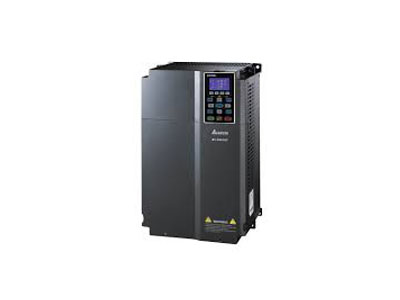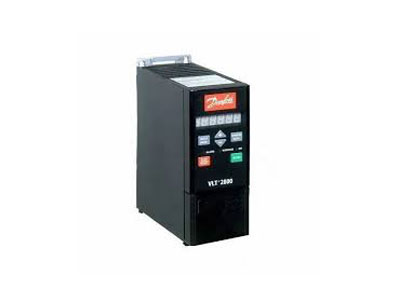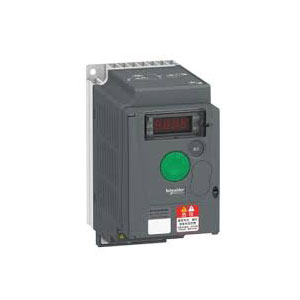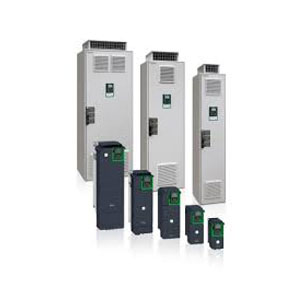Variable Frequency Drive (VFD) Guide
Variable Frequency Drives (VFDs) are integral components in many applications across diverse industries. They control the speed and torque of an electric motor by adjusting the input frequency and voltage.
The unique functionality of a VFD distinguishes it in the realm of motor controllers. Its ability to manipulate motor operations opens up a multitude of possibilities and efficiencies.
In this guide, we delve into what makes Variable Frequency Drives unique, how they work, and their importance in modern industry.
Variable Frequency Drive Explained
What is a Variable Frequency Drive?
A Variable Frequency Drive (VFD) is a motor control device that manipulates the frequency and voltage given to an electric motor. It’s often utilized in mechanical systems to manage and monitor motor speed and torque, hence enhancing system efficiency and longevity.
Besides, VFDs can provide smooth motor startup, protect from power disturbances, and offer energy savings. It changes fixed input power into variable frequency output, controlling AC induction motors’ speed and torque. A VFD can be classified based on its load features, which include variable torque, constant torque, or constant power.
Difference between Variable Speed Drive and Variable Frequency Drive
The distinction between a Variable Speed Drive (VSD) and a VFD lies in their mode of operation. A VSD can adjust the speed of a motor through several methods, including mechanical gears or hydraulic pumps.
In contrast, a VFD alters speed solely by changing the frequency of the electrical input. It implies that all VFDs are VSDs, but not all VSDs are VFDs. Thus, the VFD is a more specific term referring to drives that control speed by changing input frequency.
Difference Between VFD and Inverter
Variable Frequency Drive (VFD) and Inverter are terms often used interchangeably, but they do have differences, mainly based on their scope and functionality.
A VFD, also known as an Adjustable Speed Drive (ASD), is a type of motor controller that varies the frequency and voltage supplied to an electric motor, thus controlling its speed and torque. It’s a broader system that encompasses all components for controlling the speed of AC motors – rectifier, DC link, and an inverter.
An Inverter, on the other hand, is just one component of a VFD. It’s responsible for converting DC power (received from the rectifier and stored in the DC link) back to AC power at the desired frequency. While inverters can be found in many applications including solar power systems and Uninterruptible Power Supplies (UPS), in the context of a VFD, they perform the final step of speed control for AC motors.
So, in essence, all VFDs contain inverters, but not all inverters are part of VFDs. The inverter is just one piece of the larger system which is the VFD. The key difference lies in their functionality – while an inverter simply converts DC to AC, a VFD controls the speed and torque of motors.
| VFD (Variable Frequency Drive) | VSD (Variable Speed Drive) | Inverter | |
| Function | Controls speed & torque of AC motors by varying frequency & voltage | Varies the speed of a drive mechanism, and can be used with both AC and DC motors | Converts DC power to AC power |
| Complexity | Complex; includes a rectifier, DC link, and an inverter | Can range from simple to complex depending on the type of motor and control required | Simpler; it’s a single component used in various applications |
| Use in VFD | The overall system | An alternative name for VFDs, but can also refer to controllers for DC motors | A component of a VFD |
| Power Conversion | AC to AC | Depends on the motor type | DC to AC |
Explaining the Terms: Variable Speed and Variable Frequency
Variable Speed is a crucial feature in motor-driven systems as it allows speed customization based on operational needs. From conveyor belts to HVAC systems, the ability to vary motor speed has a substantial impact on system performance and energy conservation.
Variable Frequency is the technique that enables variable speed operation. By modulating the frequency of the electrical supply, one can directly control the speed of the motor, given that the motor’s speed is proportional to the supply frequency. This frequency modulation is the core function of a VFD, providing precise control over motor speed and subsequently, the mechanical system’s operation.
How a Variable Frequency Drive Works
Variable Frequency Drive Working Principle
The VFD works on a simple principle: it changes the frequency of the power supply, affecting the motor’s speed. This process involves three key stages: rectification, intermediate DC link, and inversion. Rectification converts AC to DC, the DC link smooths the current, and inversion changes DC back to AC at the desired frequency.
VFD Working Principle with Circuit Diagram
In a VFD circuit diagram, the rectifier stage uses diodes to convert incoming AC voltage to DC. The DC link consists of capacitors to maintain a smooth, constant voltage level. The inverter stage uses Insulated Gate Bipolar Transistors (IGBTs) to switch the DC voltage on and off, producing an output with a variable frequency.
VFD Control Methods and Types of VFD Control
There are three primary VFD control methods: Volts/Hz control, sensorless vector control, and closed-loop vector control.
Each method varies in complexity and the precision of speed control, providing solutions for different applications.
Speed Control through VFDs
VFDs control motor speed by changing the frequency of the electrical supply. A lower frequency results in a slower motor speed, and a higher frequency increases the speed. This precise control capability results in energy savings and improved process control.
AC Drive Working Principle
An AC drive, also known as a VFD, modifies the speed of an AC motor by varying the frequency and voltage of the power supplied to the motor. The frequency is directly proportional to the motor’s speed, making it a crucial parameter for control.
DC Drive Working Principle
A DC drive adjusts the speed of a DC motor by varying the voltage supplied to the motor. Unlike an AC drive, a DC drive doesn’t need to alter the frequency, as the motor’s speed is directly related to the input voltage.
Types of Variable Frequency Drives
Types of VFD drives are broadly classified into three types: Voltage-Source Inverters (VSI), Current-Source Inverters (CSI), and Pulse Width Modulation Inverters (PWM).
Voltage-Source Inverters (VSI)
Voltage-Source Inverters (VSI) are the most commonly used Variable Frequency Drives (VFDs). They function by converting AC power to DC through a straightforward diode circuit. The converted power is then stored in capacitors for later use. When power is required, an inverter switching circuit taps into this stored energy, delivering the necessary output.
VSIs are celebrated for their wide speed range and simplicity in design. They are also economical, reducing costs on both the production and installation fronts. However, their limitations include the generation of different types of harmonics and noises. They can also negatively affect the power factor when the motor speed is controlled or decreased.
Current-Source Inverters (CSI)
Current-Source Inverters (CSI) provides an alternative to VSI VFDs. Unlike VSIs that are dependent on voltage, CSIs focus on the current. Their construction employs an SCR bridge converter, replacing the diode bridge rectifier of VSIs. For smoothing the output energy, they utilize series inductors rather than capacitors.
This makes CSIs similar to a constant current generator, capable of delivering a square wave of current instead of voltage. CSIs are reliable and suitable for high horsepower motors where VSIs might not suffice. However, they also suffer from a poor power factor, especially at low RPMs, and are not ideal for multi-motor operations.
Pulse Width Modulation Inverters (PWM)
Pulse Width Modulation PWM represents an enhanced and modified version of VSIs. They are designed to provide a stable voltage output while maintaining a frequency ratio. This is achieved using a diode bridge for the rectification of AC to DC, along with a switching circuit that controls the duty cycle over a variable frequency range.
An additional regulator is incorporated to ensure stable and proper voltage and current supply to the load. PWM drives are efficient, provide a constant power factor, and include various protection circuits. However, their complex design, implementation requirements, and cost could be considered downsides.
An additional regulator is incorporated to ensure stable and proper voltage and current supply to the load. PWM drives are efficient, provide a constant power factor, and include various protection circuits. However, their complex design, implementation requirements, and cost could be considered downsides.
Components of a VFD
The rectifier in a VFD is responsible for converting the input Alternating Current (AC) to Direct Current (DC). This conversion is vital as the VFD operates on DC power. Rectifiers typically use diodes or Silicon Controlled Rectifiers (SCRs) to achieve this conversion.
The DC bus (also known as the DC link or filter section) serves as an intermediary stage in the VFD. Its primary role is to smooth the rectified DC output. Capacitors and inductors in this section filter out ripples to provide a smooth DC voltage.
The inverter is the last stage of the VFD Drive. It switches the DC voltage back to AC voltage, but this time, the frequency and voltage are variable. Insulated Gate Bipolar Transistors (IGBTs) are commonly used in modern VFD inverters for this purpose.
These components form the backbone of any VFD, facilitating precise control over motor speed and torque. Understanding these elements can help operators manage, maintain, and troubleshoot VFD-driven systems more effectively.
Differences between a VFD, an AC Drive, and a Variable Speed Drive
A Variable Frequency Drive, an AC Drive, and a Variable Speed Drive are often used interchangeably, but they are not the same thing. A VFD is a type of AC Drive that is used to control the speed of AC motors by controlling the frequency of the voltage supplied to the motor.
An AC Drive is a type of VFD that is designed specifically for use with AC servo motors. A Variable Speed Drive is a general term that refers to any type of drive that is used to control the speed of a motor, including both AC and DC drives.
Basic VFD Installation Guide
When installing a VFD, it’s crucial to ensure proper handling and positioning. Handle with care to avoid damage to the delicate components inside. Always check the manufacturer’s manual for specific handling instructions.
The VFD should be positioned in a clean, dry, and well-ventilated location. Heat is a major concern as it can reduce the lifespan of the VFD. Adequate ventilation and cooling measures are important to avoid overheating.
Ensure the correct power supply to your VFD. Check the voltage level of your supply against the VFD’s specification. Ensure your VFD is compatible with your power source.
Wiring the VFD needs careful attention. Ensure all connections match the manufacturer’s guidelines. A wrong connection can damage the drive or result in inefficient performance.
Finally, testing the VFD after installation is important. Ensure that the drive is functioning correctly. Check the output frequency and voltage to match the motor specifications.
Proper installation ensures a long and efficient service life of your VFD. Always follow the manufacturer’s installation guide for the best results.
Variable Frequency Drive Application
Applications of VFD are AC motor speed control by cyclo converters. The main electricity is pumped out into the rectifying circuit, which converts fixed AC into variable DC. A pulsed AC voltage generated by the converter will be applied to the connection circuit. The interconnecting circuit contains an inductor and a capacitor. It filters pulsed DC with a reduced ripple volume giving constant DC power at a constant value.
Variable Frequency Drive for Single Phase Motor
A Variable Frequency Drive (VFD) enhances the functionality of single-phase motors. It modulates the motor’s speed and direction by adjusting the electrical frequency and voltage. This control is crucial in applications where flexibility and precision are key, improving overall performance and energy efficiency.
Variable Frequency Drive for 3 Phase Motor
Variable Frequency Drives (VFDs) are also essential for 3-phase motors. By managing the frequency and voltage supplied to the motor, they provide precise speed control and torque. This makes them invaluable in industrial applications where high-performance and energy-saving operations are crucial.
Variable Frequency Control of Induction Motor
Variable frequency control of induction motors enables smoother, more efficient operations. Adjusting the frequency and voltage, a VFD can regulate the motor’s speed and torque. This means you can fine-tune your motor for optimal performance in any application.
Variable Frequency Drive Pump Control
Variable frequency drive pump control is another fantastic application. Pumps often need variable flow rates depending on the process demand. A VFD achieves this by controlling the pump’s speed, ensuring the right amount of fluid is moved at the right time. This leads to energy savings and improved process control.
HVAC Systems
VFDs play a significant role in HVAC systems by controlling fan and pump speeds. This helps in maintaining optimal heating, ventilation, and air conditioning levels, thereby improving energy efficiency.
Elevators
VFDs are also employed in elevator systems, ensuring smooth starts and stops, precise floor-leveling, and efficient energy usage.
Advantages of Variable Frequency Drive
Energy Efficiency
The primary advantage of a VFD is energy efficiency. By adjusting motor speed to match demand, VFDs minimize energy usage, leading to significant savings on electricity costs. This advantage is particularly noticeable in applications where load conditions frequently change.
Speed Control
AC variable frequency drives provide precise control over motor speed. This feature allows machinery to run at optimal speeds, enhancing process control and reducing wear and tear on mechanical components. A VFD offers extensive speed adjustments for diverse applications needing variable speed control.
Reduced Stress on Motor
During startup, a motor can draw up to seven times its rated current, which puts considerable stress on the motor and electrical supply. Adjustable frequency drive help manage this by ramping up speed gradually, thus extending motor life.
Improved Process Control
VFDs enable improved process control by providing precise control over process speed and flow rate. This advantage is critical in many industries, including manufacturing, water treatment, and HVAC.
Energy Savings
VFDs are designed to adjust the speed and variable torque of a motor according to the load, leading to significant energy savings. This is particularly important for applications where the motor doesn’t need to run at full speed all the time.
High Power Factor
A VFD boosts the system’s power factor by decreasing the motor’s reactive power, which is used for creating magnetic fields or charging capacitors but doesn’t do useful work. This process increases the system’s efficiency: a higher power factor means less current is needed for the same power, reducing losses and costs.
A low power factor necessitates more current to provide a certain power amount, leading to increased losses and costs.
System Protection
VFDs include built-in protective functions, such as short circuit, overload, and under-voltage protection. These protective measures help prevent equipment damage, reducing downtime and maintenance costs.
The benefits offered by VFDs, including energy savings, precise control, and system protection, make them an invaluable asset across a range of industries. It’s worth noting, however, that while VFDs can offer significant advantages, they also require proper installation and maintenance to function optimally.
Summary:
VFD Variable Frequency Drives serve a crucial role in modern technology by offering precise control over motor speed and torque. They come in different types such as VSI, CSI, and PWM, each with their distinct advantages and applications.
Their utilization extends across various industries, including HVAC, water treatment, and manufacturing, enhancing efficiency and reducing energy consumption.
However, understanding the difference between VFDs, Variable Speed Drives, and inverters is essential as it helps in choosing the correct device for the appropriate application. With their significant benefits, VFDs will continue to be a pivotal part of many systems, driving automation and efficiency.





